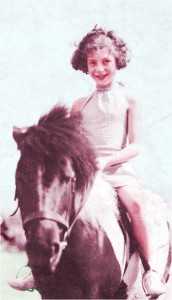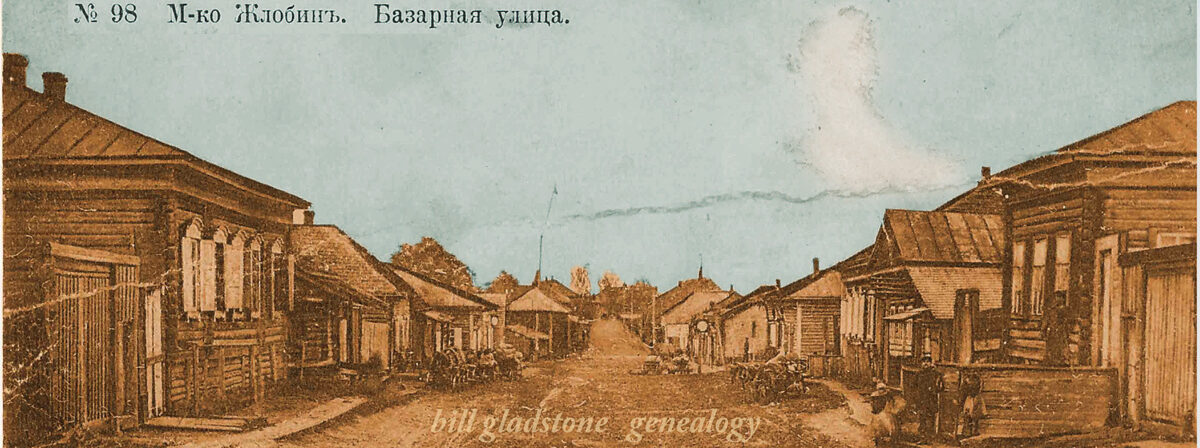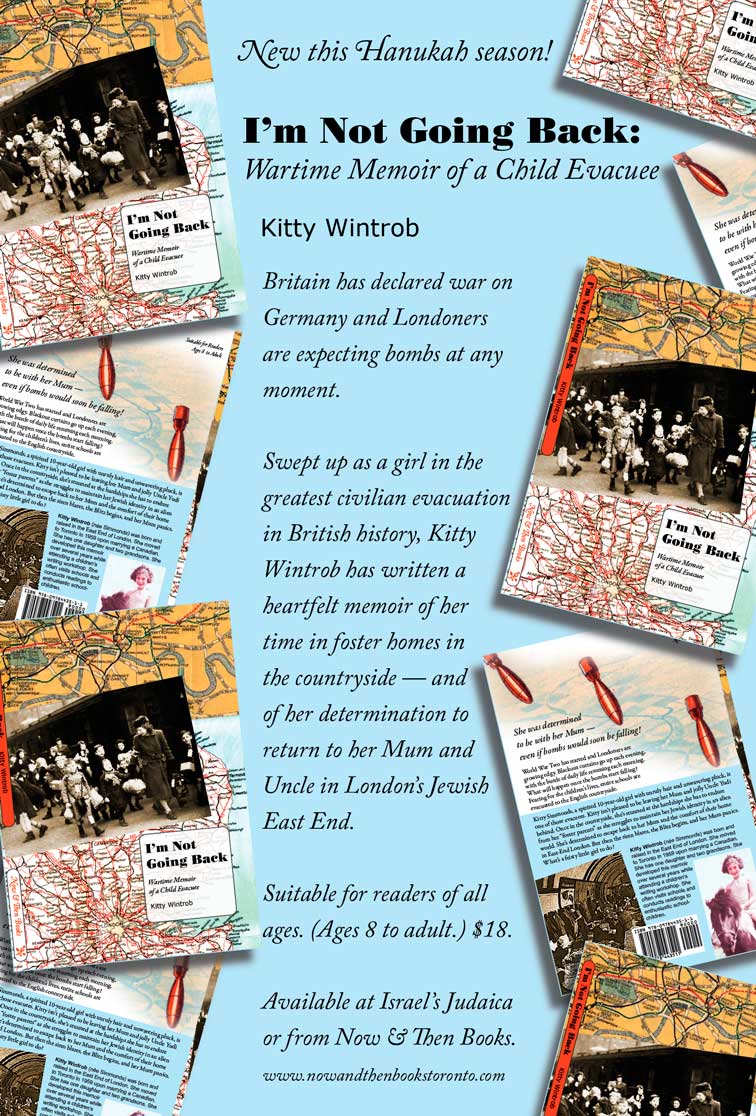 When Kitty Wintrob enrolled in a creative writing workshop with her daughter some 25 years ago, she didn’t imagine she would end up writing a full-length memoir.
When Kitty Wintrob enrolled in a creative writing workshop with her daughter some 25 years ago, she didn’t imagine she would end up writing a full-length memoir.
After receiving enthusiastic praise in the workshop for her writing, Wintrob enrolled in a second workshop, then a third. She ultimately kept taking one workshop after another for more than a decade until her memoir was finished.
But for various reasons the completed manuscript lay in a drawer for years until recently (2006), when her husband and daughter had it published privately as a birthday surprise for her.
Titled I’m Not Going Back, the 132-page book tells the story of Wintrob’s experiences as a ten-year-old girl in London’s Jewish East End during the war. Evacuated to a cold and loveless foster home in the countryside, she sneaks back to her mother in London and refuses to leave her side even as the German bombing intensifies.
I’m Not Going Back is not just a story for girls. It is a gripping and well-balanced tale told from the heart and written with maturity and sensitivity.
Wintrob composed most of it on a typewriter at her kitchen table, splashing each page with memorable personalities, concrete images and tactile sensations. Her writing style allows for easy visualization, which seems especially noteworthy for someone who lost her eyesight years ago through macular degeneration.
Wintrob generally gives careful thought to each day’s intended composition before sitting down at the computer that she now uses instead of a typewriter. “I spend a few hours at night, thinking about what I want to write, and in the morning I more or less know,” she said. “I very seldom revise.”
A couple of publishers expressed interest in the memoir but requested changes that she felt would damage the fabric of the tale. In the meantime, buoyed by the favourable reception she’s received from friends, she’s been writing more stories, including one that is ostensibly a sequel to the one just published.
I’m Not Going Back ends with the girl and her mother being forced by an air-raid siren to the shelter of St. Paul’s tube station, with hordes of other displaced residents, as bombs begin to fall. The closing sentence reads, “By the time we got to our places at St. Paul’s, I knew that one thing was for sure: from now on until the end of the bombing, this platform would be our bed.”
The sequel begins the following morning, after a harrowing night of bombs raining down on the city. “Everything outside was burning, and we had to walk home because there was no transportation,” she recalled. “We walked right through the city of London, through the Bank, Aldgate, High Street, right down Whitechapel Road to Brick Lane, right down Brick Lane to my street, and right down my street. A lot of the houses on the street were destroyed.”
Having received an indirect hit, her family home was badly damaged. “The great fire of London” is how Wintrob refers to the event, which occurred in 1941. Amidst the rubble she recalled finding two delicate figurines, a bride and bridegroom from a wedding-cake, that once stood atop her piano.
Wintrob has visited Eitz Chaim and other schools where, with the help of an instructor or friend, her memoir was read aloud and she answered the children’s questions afterwards. The reception is always enthusiastic, so much so that Wintrob said it has inspired her back into a regular writing routine.
A school secretary in postwar London, she decided to try living in Canada for two years, during which she worked briefly for the Canadian Broadcasting Corporation in Toronto. What ultimately persuaded her to return here was her blooming relationship with Ralph Wintrob, then a CBC news writer in Toronto, whom she married in 1959.
Now a retired teacher, Ralph Wintrob is active in the city’s arts community and often lectures on Jewish literary subjects. Their daughter Suzanne Wintrob is also involved in the literary world, being a professional writer and editor.
While I’m Not Going Back is not yet available commercially, it’s probably only a matter of time before a smart publisher grabs the rights and gets it into print. ♦
Postscript: Bill Gladstone, author of this review, became that “smart publisher” when his publishing company, Now and Then Books, published Wintrob’s book in 2010. See the video link at the bottom of this page.
© 2006
See also the story on Kitty Wintrob in the Town Crier, August 31, 2011







